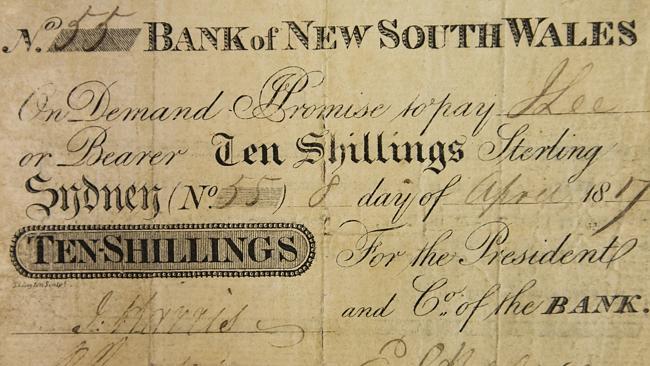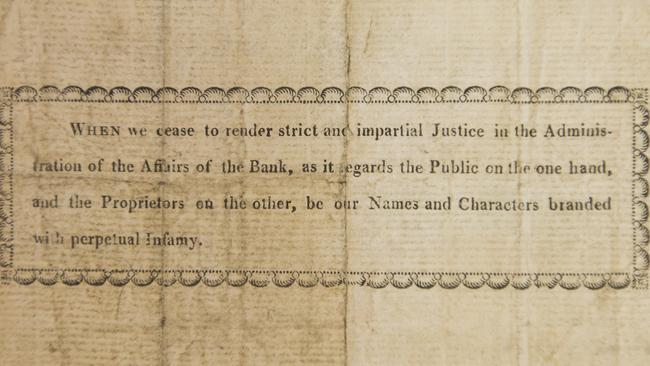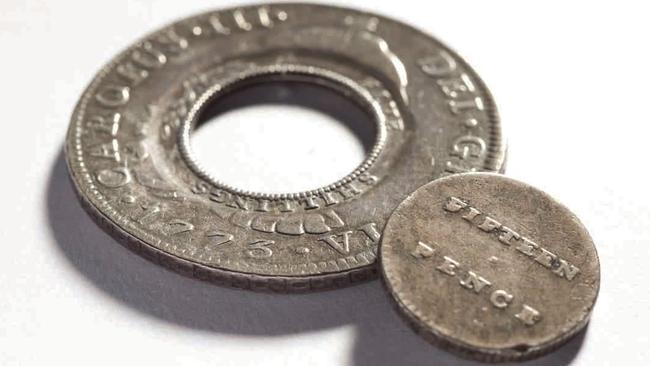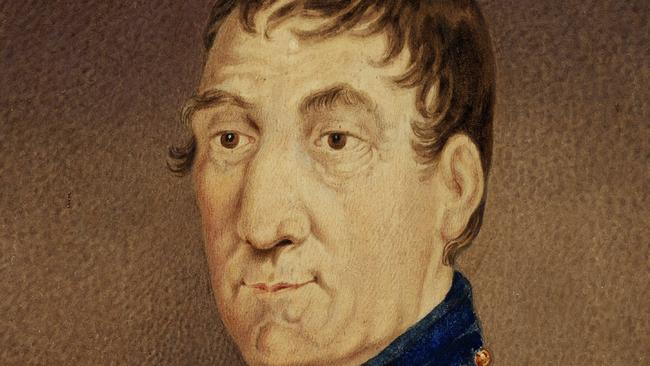There’s nothing ‘rum’ about NSW’s first official banknote
When the British set up shop in 1788, there were no plans to mint money but it’s a complicated business running a far-flung convict economy.

Today in History
Don't miss out on the headlines from Today in History. Followed categories will be added to My News.
While many countries like to put a pithy motto on their currency, when the colony of NSW printed its first banknotes in 1817 it featured an assurance from the Bank of New South Wales.
“When we cease to render strict and impartial Justice in the Administration of the Affairs of the Bank, as it regards the Public on the one hand, and the Proprietors on the other, be our Names and Characters branded with perpetual Infamy.”
The bank wanted to assure customers it intended to be fair and equitable as the financial underpinning of a growing colony.
That bank later became financial giant Westpac, the same institution that has just loaned the last known banknote from that time to the Australian Museum. Westpac is also sponsoring the transformation of the museum’s Long Gallery into a showcase for 200 of its most significant treasures, of which the note will be a highlight.

The two-centuries-old 10 shilling note was purchased by Westpac last year when it came up for auction after being discovered in Scotland. Its history goes back to the early decades when NSW was a penal colony.
Before 1788 there was no Australian currency. The indigenous people had their own trading networks in which sometimes there were set rates of exchange. For instance, a particularly valued form of shell from the coast might fetch several animal skins, bird feathers or an amount of stone or pigment only found inland.
When the British set up their colony in 1788 it was mainly to absorb excess convicts and as a base to look after trading and naval interests in the Pacific and Asia. There were no thoughts of setting up a mint or giving the colony its own currency.
Some colonists brought their own coins and various governors also imported small amounts of money to be distributed, but initially there was limited money.

Apart from IOUs privately exchanged, there was also a system of issuing promissory notes to colonists who deposited surplus produce in the government commissariat stores.
These notes promised payment for the produce, but it was only redeemable back in England and was not guaranteed by the government.
A barter system evolved with exchanges of goods and services and at one point alcohol became the most desirable currency, leading to the garrison officers the NSW Corps being nicknamed “the Rum Corps”.
Things began to change when Lachlan Macquarie took over as governor in 1810, restoring order after a rebellion by the NSW Corps, later dubbed the “Rum Rebellion” despite the fact that rum played no part in it.
Recognising that NSW had outgrown its original status as a convict dumping ground and had become more sophisticated economically, Macquarie was determined to give the colony its own currency.

In 1813 he imported thousands of Spanish dollars and ordered emancipated convict William Henshall to punch out the centres, creating two coins, both of which were stamped with marks identifying them as currency from NSW. The ring coin, known as the “holey dollar”, was worth five shillings and the small punched-out centre was worth 15 pence.
Although this resolved some currency problems, for Macquarie it was only a temporary expedient. He believed the colony needed its own bank capable of issuing banknotes backed by the bank’s reserves.
Despite resistance from the government back in England, Macquarie approved a charter for a bank in 1817. Some of its major shareholders and board members were prominent citizens, some with convict backgrounds, including John Thomas Campbell, D’Arcy Wentworth and William Redfern.
They rented premises from businesswoman Mary Reibey and opened their first branch on April 8, 1817, the date handwritten on the note loaned by Westpac to the museum.
The note was number 55, issued to bank customer J. Lee, it was signed by bank directors John Harris and Robert Jenkins, and handed over by cashier Edward Smith Hall.
It is possible Macquarie took the note with him when he returned to Britain and it eventually ended up in the hands of a collector.
The bank would continue to issue notes up until the first commonwealth currency was printed in 1913.
Originally published as There’s nothing ‘rum’ about NSW’s first official banknote



